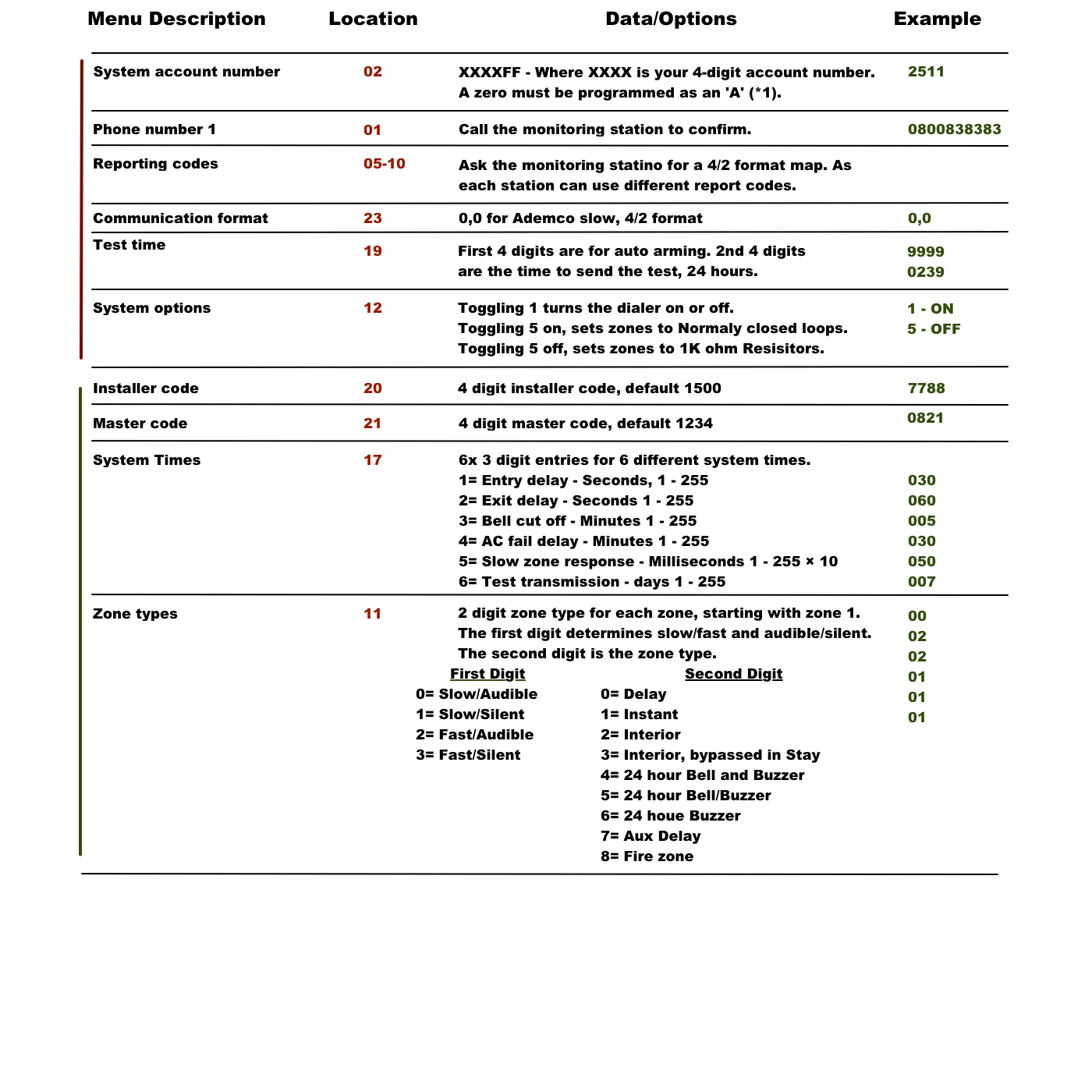
Breaking News
Main Menu
Dsc Pc1550 Installer Code Reset
суббота 01 декабря admin 66
Is there a way to reset master code on dsc 1832 [ 2 Answers ] I have a DSC 1832 security system at my home but never got the master code from the installer who I have now lost touch with. I need to set the clock on my 5501 keypad and it appears that requires the master code. Lear how to change the 'Master Code' on your DSC alarm system with a LED keypad.
Pc1550-interface An interface and keypad emulator for Digital Security Control's PC1550 Alarm Panel This class is a keypad emulator for the Digital Security Control's (DSC) PC1550. The model number of the keypad it emulates is PC1550RK. It should work with any ATmega chipset, and was tested using an Arduino UNO. With this programmatic interface, you could emulate your own keypad on the device (iPhone maybe?) of your choice. 
Or you could setup your own monitoring/alerting system (maybe send yourself a text message) when certain alarm events occur. Hardware Connections There are four wires that go to the keypad: Red Voltage.
This should be about 12V. On my system, a voltage meter read 13.3V with a brand new battery. You should be able to safely use this as a power supply for the Arduino. Simply connect the red line to the pin labeled Vin. The Arduino's internal voltage regulator will take care of the rest.
Because the PC1550 has a backup battery supply, your Arduino will continue to be powered even when the electrity goes out (quite convenient). Black Ground. If you're using the PC1550 to supply power to the Arduino, connect this to the GND pin next to the Vin pin Yellow Clock. The PC1550 control panel determines the clock cycle. So long as the processClockCycle() method on this class is called more frequently than half a clock cycle from the PC1550 then we will safely be able to read and write signals from the PC1550 control panel. The total cycle is about 1500-1600 micro-seconds, on average (roughly 650 Hz). Because data is sent when the clock is low and read when the clock is high, we must run the processClockCycle() method at least every 800 micro-seconds.
The more frequently the processClockCycle method is called, the more likely data transmission will succeed (in both directions) without data loss. If you're not sure if you can commit to a calling the processClockCycle() function frequently enough, then you can use processTransmissionCycle() instead which will call processClockCycle() and block until a full transmission cycle is complete. This could be handy if your program is performing another task that could use significant clock cycles between calls to processClockCycle(). On the downside, processTransmissionCycle() takes between 57ms and 104ms to complete. Connect the clock line up to either a digital or analog pin.
We only read on this line using digitalRead, so either a digital or analog pin will do. Analog PIN 4 is the default but can be overriden via the constructor to this class. The data line is used to send bits to and from the PC1550 when the clock is low and high, respectively. Connect this line to any analog pin. While we can read data from the panel using only digital functions, we must use analog functions to pull the pin low when we want to send data back to the control panel. Analog pin 3 is the default but can be overridden via the contructor.
There is one additional connection that can be made that can provide additional state information from the alarm controller. The PGM terminal on the DSC PC1550 control panel can be programmed to do a number of things. One option is to configure it as a 2nd data line. The installation manual refers to the PC16-OUT module. This module reads data from the PGM line and we can emulate that module here. This line does not go to the keypad, and is optional for use by this library. For the PGM terminal to work, it will need to be connected to the AUX+ terminal with a 1k Ohm resistor (for PC1550s).
Analog pin 1 is the default but can be overridden via the contructor. See for a full listing of PGM options.
PC1550 Interface Specification The PC1550 control panel starts by holding the clock high for roughly 26.5ms. Iskysoft data recovery download. It then clocks out 16 cycles (one cycle is represented by the clock going low and then returning to a high state). After 16 clock cycles, the PC1550 holds the clock high for roughly 26.5ms again, which starts the entire cycle over.
During the 16 clock cycles data is received when the clock is high: • The first 8 clock cycles are used to send one octet (byte) of data to the keypad (one bit per clock cycle). This byte contains information about which zones are currently open (what zone lights should display on the keypad). For this reason, the first 8 bits are referred to here as 'zone bits.' The table below shows how the data is received and interpretted. Bit 7 is received first, and bit 0 is recieved last. When bit 7 is on, then the zone 1 light should be on; when bit 6 is on, then the zone 2 light should be on, etc. Bits 1 and 0 are not used.